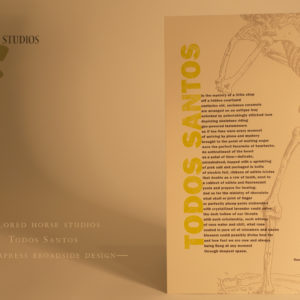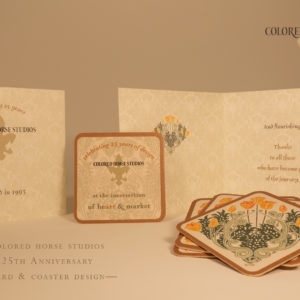01 Apr Theresa Whitehill: Design Is Professional
What traits do you think a professional in the graphic art industry must have and why?
Graphics is a line of work that is inherently collaborative in its production, and social in its impact on the outside world. A professional in the graphic arts industry must have some sense of perspective on the history not only of the graphic arts but also of the arts in general and also be informed about social and political communities that are intertwined with the work. As a trade that is based in a highly skilled craft, of course there are requirements for discipline, skill, technical knowledge, and talent, but in addition to those fundamentals, the professionals in graphic arts that I look up to are those who also have vision. Whether this vision be a style that has been honed by years of application or leadership and mentorship for the other graphics professionals who are part of one’s working circle, I like to see a restlessness to make a difference.
What is ethics in graphic arts? Do you think ethical responsibilities fall on the shoulders of the artist, the client/company stakeholder or both?
Ethics in graphic arts have to do partly with business practices. As an industry that is not regulated—there is no government-required licensing to be in business—it is the responsibility of graphic arts professionals to adhere to best practices in business when it comes to clear standards for establishing fees, charging for work, estimating and budgeting. I find that the ethical responsibilities for maintaining intellectual property rights has fallen almost entirely on the artist whereas I see this as an area where both client and designer should have equal responsibility. In my 25 plus years of running my own business I have been in a constant state of educating clients about copyright, negotiating fees that relate to copyright, and being willing to lose work often when clients are naïve about the fact that the creative work embodied in my product is my single biggest asset. Through developing a reputation for the quality and distinctiveness of my work I now have more authority to ask for fair compensation for my creative work. And I could not do this in a vacuum, if other graphics professionals and the graphic artists guild were not fighting the good fight.
Have you ever used your work as a tool for advocacy or to bring awareness to a specific topic negatively impacting society?
I have recently completed a project combining graphics and poetry centered around the idea of medical prescriptions. This resulted in the exhibit, “Prescriptions for Life,” in which I collaborated with artist Paula Gray, combining her collages made from a nineteenth century medical prescription ledger with my writings exploring the ideas embodied in prescribing medicine and applying them to a wider arc of life. Essentially, we created a new context in which we could propose our own prescriptions for life situations. I produced letterpress broadsides of the writings for the exhibit. Titles of pieces include “Prescription for Anxiety,” “Prescription for Baby Girls,” “Prescription for Tango,” and “The Morphine Tree,” in which I explore some of the motivations behind addiction.
Due to the health crisis around the coronavirus I am now working with the gallery to produce an online digital companion to the exhibit, as it opened just days before the residents of San Francisco were ordered to remain at home, effectively canceling the exhibit’s opening reception and any possibility of viewers visiting the gallery.
Link to the exhibit at the California Institute of Integral Studies, San Francisco, CA
https://www.ciis.edu/about-ciis/the-arts-at-ciis/arts-at-ciis-events/prescriptions-2
Theresa Whitehill, Design Director, with a background in literary and book arts, founded Colored Horse Studios in 1993, producing logos and branding, packaging, collateral, copywriting, websites, and publications.
Headshot © Jendi Coursey. Images © Theresa Whitehill. Used with permission.




